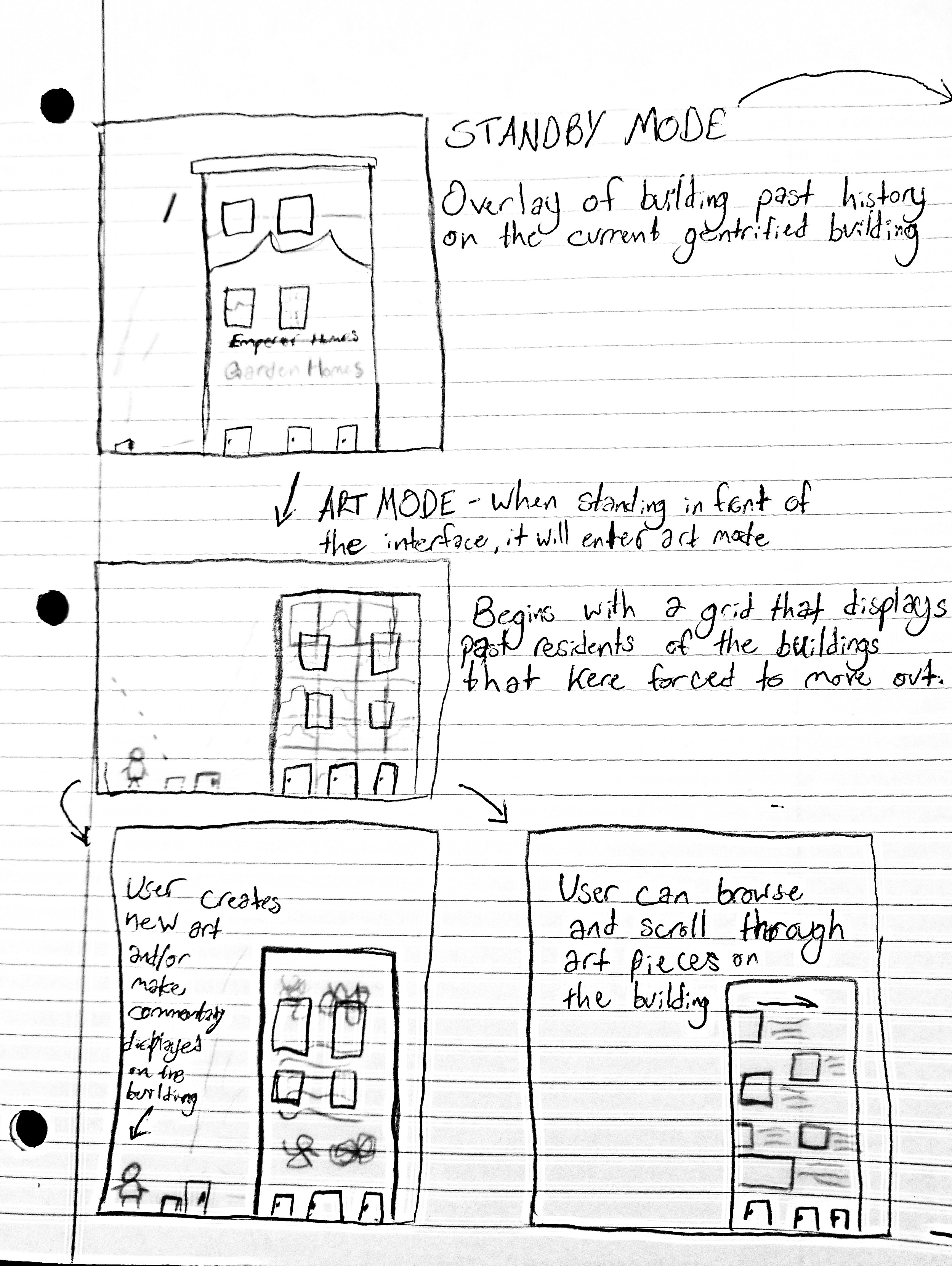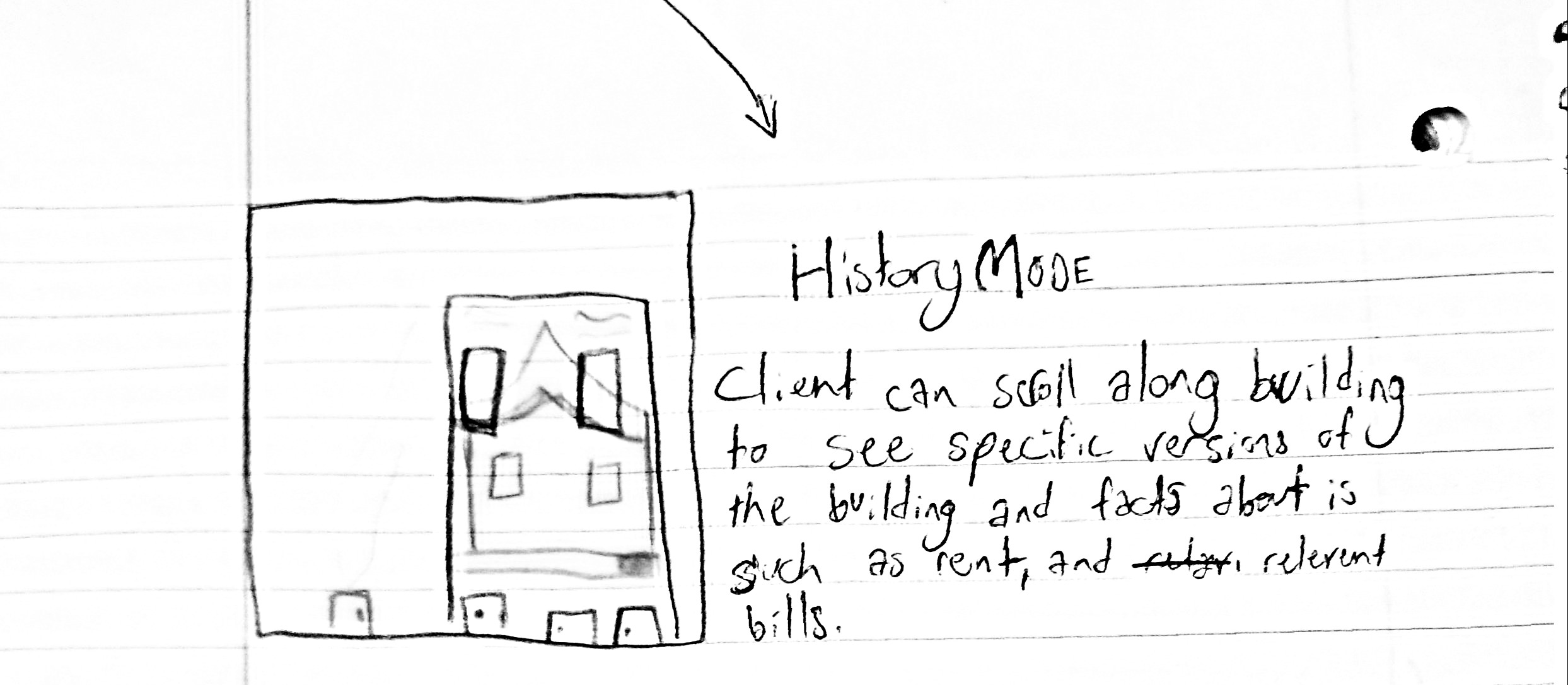Our Design:
We have selected for our design a large interactive display that will be shown on the front of a building, to be placed in a public, central location within a gentrifiying community. The design itself will support some of our most ambitious s, namely the ability to (task 4) track the history and development of buildings within the community and the ability to (task 6) geotag art and other personal ideas to buildings and locations. Although such a design is likely too ambitious and non-profitable to receive real-world funding, we have chosen this design because it is by far the most eye-catching, and we believe it is an idea that could prove to be immensely impactful while synergizing the selected tasks. Due to its large and eye-catching nature, it can serve as a highly disruptive force for those who wish to display their frustrations to those who are normally blind ot it. It is also reasonably likely that activists will be able to assemble to parts needed to make the project work. Residents of gentrifying areas are usually people who are low-income with little time or the mental and emotional bandwidth to be participate in the immense amount of work to cause legislative change in their area. Additionally, they have trouble creating an impact when they do have the time or energy to use their voice. By bringing the design to the people (rather than hoping they download an app or go looking for a service), we are catching their attention on their daily commutes. They are able to view very directly the absurd wealth being pumped into something no longer meant for them. They can then express their concerns about this through art. Also as a side effect, gentrifiers, who might or not care, can become more aware of the space they are occupying. By encouraging members of the community to share their personal art and history with local buildings and businesses, we are trying to help display the voice of the community in a very public setting to vent their frustrations. We have chosen both of the above tasks to fit with an overarching theme of personalizing and disrupting the subject of community. An interactive display, available to people who would walk by it every day or the occasional outsider, allows people within the community to show what it means to them, while people outside the community may learn about its rich history and culture. Community residents have a chance to show the outside what they are experiencing, beyond what can be found in Google searches and word-of-mouth.

